Introduction to Curry Rice
Did you know that curry is just as popular in Japan as ramen? Furthermore, when most people think of curry, they think of India or Thailand. While these nations have fantastic curry-based cuisines, Japanese Curry has its roots in these countries, but not in the way one might imagine. The typical individual in Japan ate curry more frequently than sushi or tempura in 2000. Most individuals said they ate curry and rice multiple times each month in a study of over 10,000 Japanese citizens, which labeled curry “a national food of Japan.” And this article, I will introduce you and guide you about Japanese curry rice.
Etymology
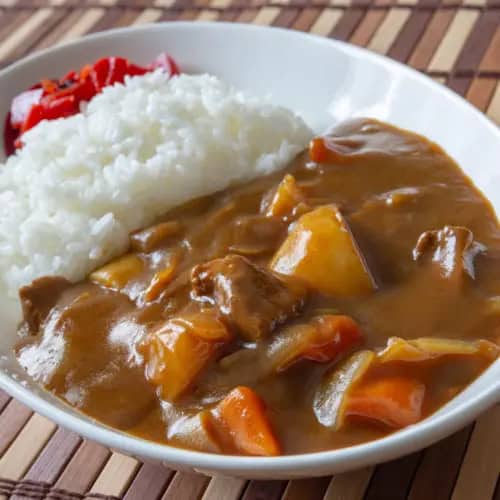
Curry quickly became a staple of the Japanese diet. In Japan, karē is typically served as a rice dish, karē raisu (curry rice). In Mainland japan, the earliest reference of a meal named raisu karē (meaning ‘rice curry’) – but spelled taisu karē – is in Japanese cookbooks from 1872.
What is Curry Rice?
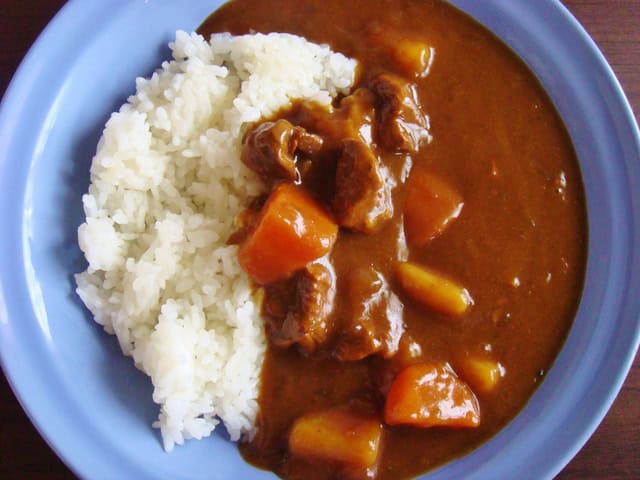
Curry rice (カレーライス) is a Japanese traditional meal that consists of curry served over rice. There is also a variety of original-style curry rice that is only found in Japan. This was introduced to Japan from England during the Meiji era, and it is a meal that has altered distinctively in Japan. It was born in England and based on Indian cuisine. It also is popular as “curried rice” or “curry and rice” in England. In Japan, they sometimes shortened this as “curry”, and it is so popular that they referred it to be the “Japanese national food” with ramen. It consistently ranks high in popularity surveys of elementary and junior high school lunch menus.
History of Curry Rice

Curry rice, like ramen, is now considered a national cuisine of Japan. The British who had invaded India brought Japanese curry back to Japan, and what was organized in British style (European style) was taught to Japan, and further arranged in Japanese style is the origins of modern Japanese curry. Curry was initially in Japanese literature around the late Edo period, but the Japanese first enjoyed it during the early Meiji period. Around this time, a recipe book was published that described how to prepare it, and they also utilized this for the Army’s lunch menu. In 1872, in Japan, they published the cookbook “Western Cuisine” (Kanagaki Robun) and “Western Cuisine Guidance” (Keigakudo owner).
Japan’s isolation system has practically disintegrated since Perry (Perry expedition) arrived in Uraga. Many Westerners resided in the Yokohama area, and “Western cuisine” spread among the Japanese as a result. Curry did not become popular among the Japanese until the early twentieth century when it was embraced by the Japanese Navy and Army. After a positive response in the Japanese Army and Navy, it eventually became popular in school cafeterias.
Curry Rice Recipe
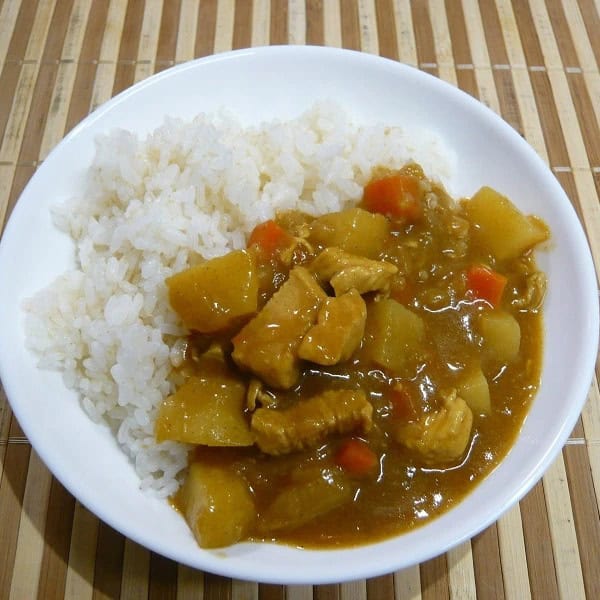
Curry Rice Ingredients
| The Curry Rice Ingredients for 6 person | |
| Vermont curry <sweet> | 115g |
| Beef (diced) | 250g |
| Onions (medium) | 400g |
| Potatoes (medium) | 230g |
| Carrot (medium) | 100g |
| Salad oil | 14g |
| Water | 850g |
How to make Curry Rice?
Cut the onion in half vertically, remove the core, etc. with the flat side down, and cut into radial combs.
Cut the potatoes in half vertically, then cut in half and divide into two equal parts. As a guide, divide one piece into 6 to 8 equal parts.
Cut the carrots in half vertically and cut them into small pieces about 3 cm in size with the flat side facing down.
Heat the salad oil in a thick pan, add beef, onions, potatoes, and carrots, and fry until the meat becomes brown and the onions are tender.
Add water and remove the lye when it boils. Boil on low to medium heat for about 15 minutes until the ingredients are soft.
Turn off the heat, and after the boiling has subsided, add the roux and dissolve it well.
Boil for about 10 minutes until it thickens, stirring occasionally over low heat again.
What are the vegetables that go well with Curry?
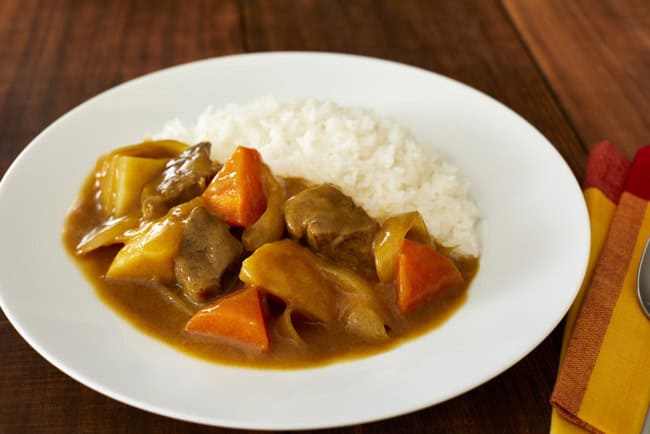
Curry is one of the most popular dishes throughout the year. As ingredients, potatoes, onions, carrots, and other classics are good, but why not use seasonal vegetables to change the curry? You can eat vegetables and meat on one plate, and if you cook them all together, it will come in handy as a pre-made menu. Speaking of “radish” and “Chinese cabbage”, which are seasonal vegetables from autumn to winter. When you get whole radish and Chinese cabbage, it is easy to cook them all at once. Not only do radish and Chinese cabbage have a light taste and go well with deep seasoning, but they also become soft when simmered.
How to eat the curry?

In Japan, they serve curry in either a dish or a metal container called Sauce Boat or Gravy Boat. About the latter case, they pour the curry from a sauceboat container into the rice. In Japan, the names of the containers can be as ” sauce pot” and “gravy pot.” When eating curry and rice, there are ways to mix rice and curry on a spoon, and to mix curry and rice in advance. In South Asia, such as India and Sri Lanka, it is customary to mix and eat with hands, and in the era of “yellow curry” made with curry powder. Additionally, Worcester sauce was the standard. In addition to raw eggs and sauces, some people eat them with seasonings such as soy sauce and mayonnaise, and there are many ways to eat them.
Retort-Pouch Curry

You can also eat curry rice by buying some commercially manufactured products. The Retort curry is a convenient product that you can make and eat one serving of curry rice by simply boiling it in hot water for 3 to 7 minutes or heating it in the microwave for a few minutes. Therefore, in Japan, it is now used on a daily basis by a wide range of people, from children to the elderly. There are various types of retort foods, but retort curry is a popular product that accounts for one-third of the sales volume.
What are the health benefits of eating Curry?
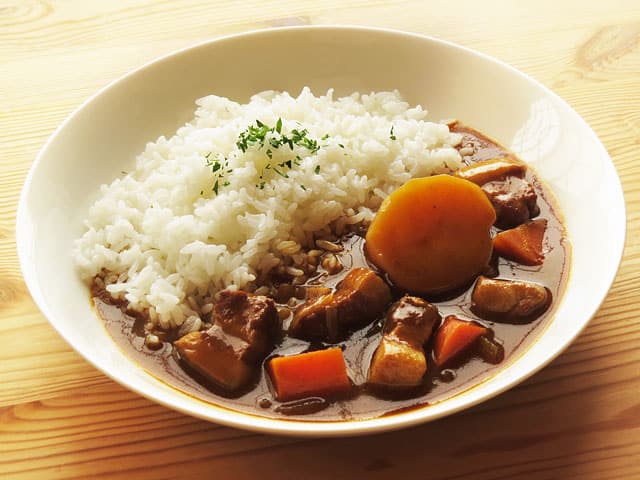
Do you know curry is one of the ultimate healthy foods with plenty of “Chinese medicine”? Curry, which contains a large number of spices that some treat as medicine, can be expected to have various health effects such as preventing a decrease in appetite and liver function and enhancing the function of autonomic nerves. Curry is one of the best meals to prevent summer fatigue.
What are the types of Curry and their ranking?

1. Keema Curry
Keema is the man’s favorite curry and is delicious and has the taste of meat. You can place a thick keema curry on top of the flat rice and put the soft-boiled egg into the middle part.
2. Chicken curry
In Japan, most curry is pork curry, but in the world, chicken is the standard curry meat. Additionally, in India, the home country of curry, which has a lot of Islam and Hinduism, chicken curry is overwhelming because they do not eat pork or beef for religious reasons.
3. Murugu Makani
In the summer of 2020, butter chicken curry was the best-selling seasonal curry at Matsuya. Butter chicken curry is also popular in convenience store lunch boxes.
4. Beef curry
You can feel the umami of the meat firmly, and it is a nice curry when you want to eat it solidly. Japanese cut the beef into slightly larger pieces and simmered until it becomes slightly soft. It goes well with vegetables such as peppers, eggplants, and onions.
5. Pork curry
Probably the most eaten curry in Japan is pork curry. The fat of the pork meat melts into the curry roux, and the fat and the curry are very delicious.
Recommended Curry Rice Restaurants
Yellow Spice

The inside of the store is a dim space with bar-like lighting. It seems that many people use dates. The curry is soup, so it’s smooth and you can drink it as it is. The ingredients are also lumpy on the bottom and it is a perfect score to eat. Their soup curry ramen is offered only on Friday nights and weekends, is also very popular among regular customers. Spicy soup curry and smooth flat noodles are a good match.
Kyoeidou

“Kyoeidou” is the only restaurant in Japan that offers Sumatra curry. Its history is old and dates back to the 13th year of the Taisho era. The dark black sauce unique to Sumatra Curry does not use any flour and condensed with 26 kinds of spices and the deliciousness of vegetables. The meat that is also simmered until they become tender and juicy. The curry made by boiling for hours has a smooth texture but a rich taste. Pork, chicken, beef, shrimp, and tongue curry do not use the same sauce, so they all have different tastes.
Spice Cafe
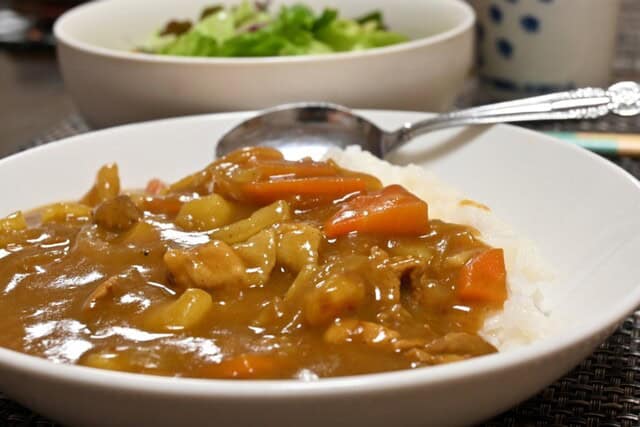
You can enjoy spice dishes prepared by Mr. Ichijo Ito, the owner of a chef who has traveled all over the world. You can enjoy Japanese-style modern curry in the store, which is an old-fashioned folk house. “Spice Cafe” with the concept of “spice dishes for Japanese people with delicate tongues”. The shop uses spices not only for curry but also for salads and fish dishes.
Tomato
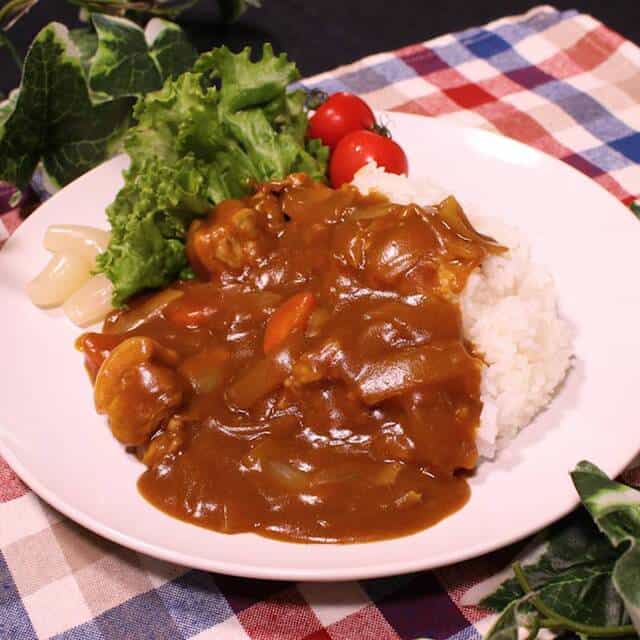
In Ogikubo, a fierce battleground for curry, “Tomato” is a famous restaurant that no one knows its name. The red awning near the residential area after passing through the shopping district is a landmark. The atmosphere of the restaurant is like a small old-fashioned Western-style restaurant. It’s not flashy, but it’s an elegant and warm shop. Their menu includes curry, beef stew, and beef stroganoff. At this shop, we blend 36 kinds of spices and carefully finish the curry over a week. The curry that took such time and effort has a deep color.
Conclusion

There is no real conclusion to the story of Japanese Curry. It writes anew every day. There is a real heartwarming effect that it has can easily be considered Japanese soul food. It’s the kind of dish that makes one think back to your favorite memories of a homecooked meal. Yet, it can be eaten and found everywhere in Japan. If you have never tried Japanese Curry, you can try it now and make one of your own. Additionally, if you like curry, you can have a taste of Curry bread of Tokyo and Yokosuka Kaigun Curry from Kanagawa prefecture.



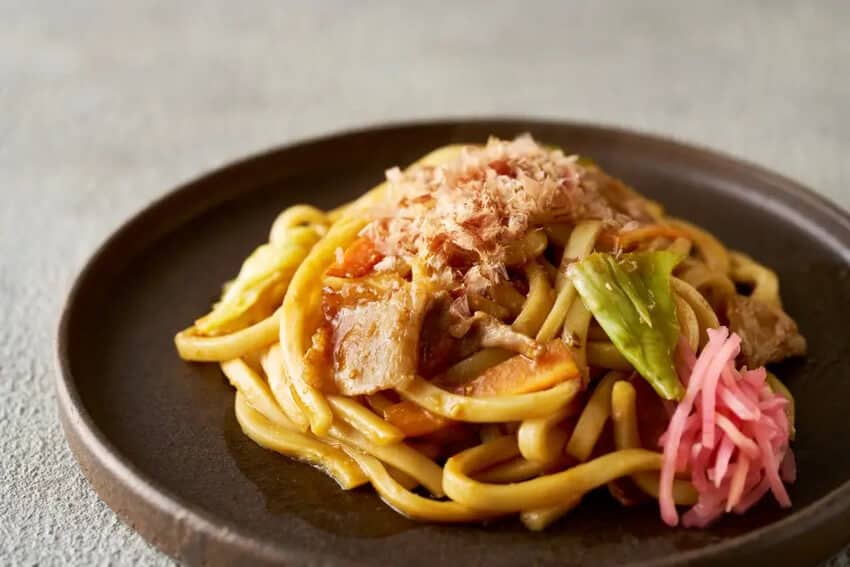
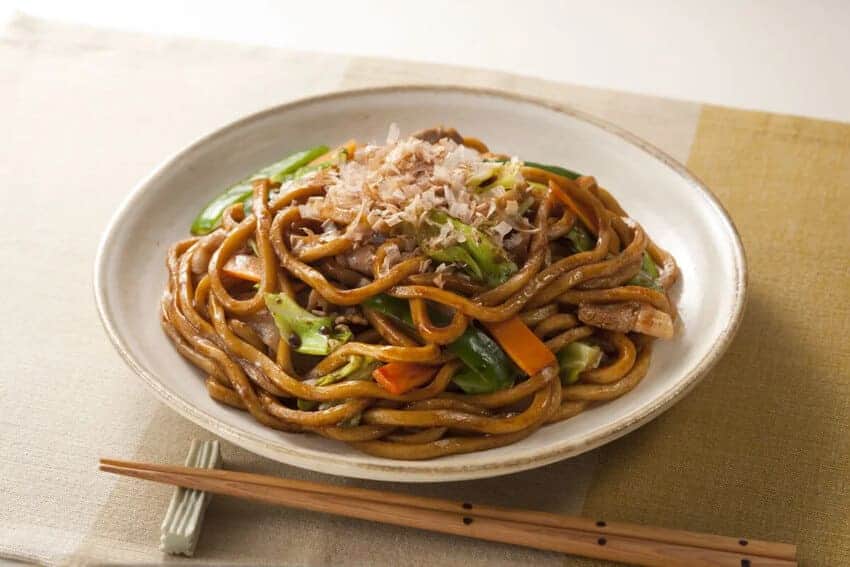

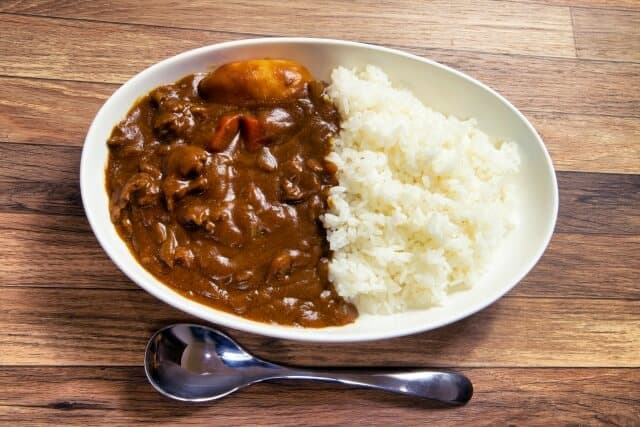
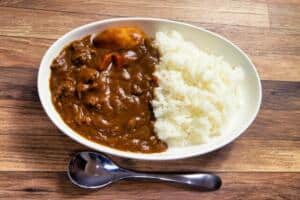
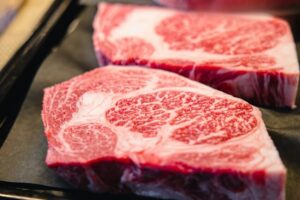
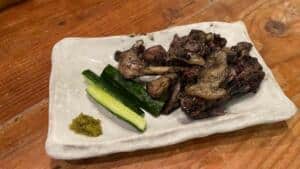
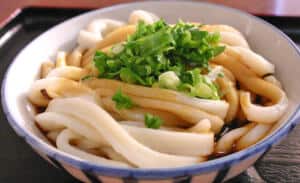
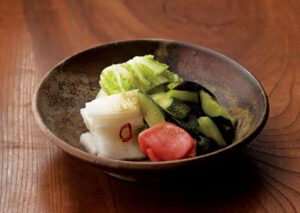
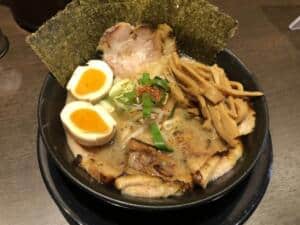
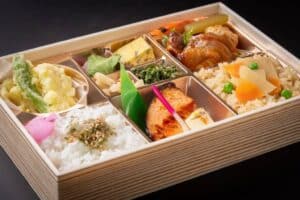
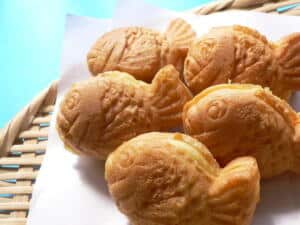
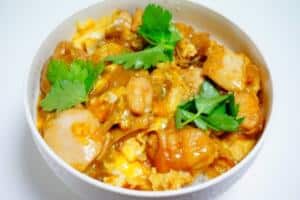
Comments